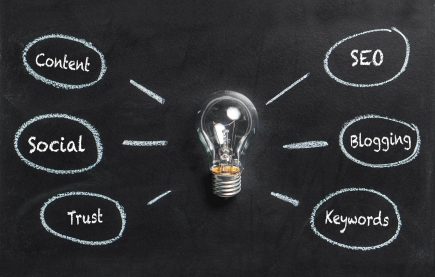
Web Development vs. Web Design: What is the Difference?
Creating a custom website is a complex process that involves numerous different facets and processes. Ultimately, though, a site’s creation can be broken down into two distinct phases: web design and web development.
Many people use these two terms interchangeably, but they are actually two different and distinct processes. In a nutshell, web design is all about the look and feel of a website, while web development refers to the coding required to bring the website to life.
What is Web Design and What Does It Involve?
The term “web design” concerns the front-end of a website. In other words, the parts that the final user will see and interact with, from text and images to clickable buttons and fillable forms. Web design is a relatively new field, but can be linked back to the worlds of graphic design and multimedia. If you’d like to learn more about its history, check out our article on how web design became so essential.
As the name implies, web design is all about the design process of building a website and bringing it online. Web design encompasses the research and planning phases, from user research to choosing color schemes and imagery, as well as creating all the elements that will eventually make up the finished site.
The specific components that make up the web design process include (but are not necessarily limited to) color palettes, font families, typesetting, patterns, icons, illustrations, image selection, photo alterations, and glyphs (visual representations of characters).
Website design also includes functional elements, also known as interactive elements. These are simply the parts of the website with which the user will eventually interact directly. They might include navigation menus, links, buttons, animations, and videos.
Here’s a quick pro tip that many people outside the web design profession do not realize: an over-reliance on interactive features will often lead to a bad user experience and a slow website. Use them sparingly for the most impactful effect.
How Does Web Design Relate to UX?
We all know that first impressions are critical. This is just as true on the web as it is in the offline world. Therefore, for businesses that want to attract leads and convert them into customers, great web design is essential. However, a well-designed website isn’t just about looks. No matter how aesthetically pleasing a site may be, it will not succeed if it does not offer an easy and seamless way for users to interact with it.
User experience, or UX, is a field of its own that is directly related to web design. A great website needs to not just look beautiful, but also clearly instruct users on how to interact with it. A site’s visual hierarchy, also known as site structure, refers to the ways in which design elements are organized on the page, guiding the viewer to take in those elements in the correct order. Visual hierarchy plays a direct role in the user experience.
Another central component to successful web design that gets results is consistency. Repetitive elements across a website create a sense of uniformity, which enhances ease of use as well as creating a visually cohesive experience that aligns with the company’s branding.
The Stages of Web Design
A web design process has three main stages:, mood boards (also called stylescapes), wireframing, and prototyping (also called high fidelity mock-ups).
A stylescape is a digital collage showcasing the typography, photographic styles, color palettes, and sometimes copy that will be used on a website. You can think of it as a more sophisticated mood board. A stylescape defines the overall aesthetic of a site, ensures that the various elements will play well together, and ensures that the website reflects the client’s needs. At Lform, we stylescape all websites before we begin building, and we have found that it greatly assists in creating an end result that our clients will love.
The next stage is wireframing. A wireframe is a basic visual diagram illustrating the placement of various elements (such as an image, slideshow, or introductory text) on a web page. Wireframes help to maintain design consistency throughout the site. This is a crucial part of the process which helps develop public and private user expectations and increase familiarity with the site.
A wireframe may also be called a site schematic or blueprint. It is a prototype that looks and feels like a real website, but offers only rudimentary interaction capabilities.
Finally, prototypes (also known as high fidelity mock-ups) are simply more sophisticated and detailed wireframes that may include more in the way of real content, images, and so on.
Only once all these stages have been completed, and the client is completely satisfied, will we begin the process of developing the finished website.
With the advent of smartphones and tablets, it is essential that websites are responsive. This means that they will adapt to a user’s screen and present a flawless experience on any device. Often, web designers and web developers work in tandem on this problem. They will decide collaboratively how best to have elements stack and how those elements should respond to different breakpoints and resolutions. Web developers often use flexible grid layouts based on percentages to speed up the process and allow elements to respond well on any device.
There are numerous tools on the market that web designers can utilize to create these realistic mock-ups. Some of the tools you might have heard of include Adobe Photoshop, Adobe XD, Sketch, InVision, and many more. If you’d like to know more about the software we consider essential for web design, we shared a post about our most-used web design tools.
What is Web Development?
Web development governs all the code that makes a website function and brings it online. Web developers take the designs and layouts created by web designers, and use programming languages (JavaScript, HTML, C#, and Python are a few you may have heard of) to turn those designs into beautiful, functional websites.
All the technical aspects of a website are the responsibility of the web developer. In other words, their job is to ensure that every element of the finished site does what it is intended to do.
The Two Main Components of Web Development
The web development process can be broken into two primary components: front-end and back-end coding. Some developers will specialise in one or the other, while other developers (often known as full-stack developers) will be knowledgeable about both front-end and back-end coding.
The front-end is the code responsible for determining how a browser will display a finished website, and is sometimes also referred to as “client-facing” web development. Front-end coding is responsible for all the parts of a site that a user will eventually interact with when the website goes live. Elements such as buttons, layout, images, and animations are all the ultimate responsibility of a front-end developer.
Some of the most common languages used in front-end coding are HTML, CSS, and JavaScript, though these are far from the only ones that can be used.
Back-end coding is sometimes also called server-side coding, and is responsible for interacting with a web database and serving data to the public side. These are the parts of the website that the typical user will never see, and may never even think about, but which are essential for its proper functioning. Back-end programming often involves connecting the front-end of the website with a content management system (CMS) such as WordPress.
Back-end coding invariably involves the design or configuration of a database. Therefore, a back-end developer must have an extensive knowledge of databases and database management, as well as the intricacies of how to query a database to pull the appropriate data. Some of the databases a back-end developer might use include MySQL, Microsoft SQL, PostgreSQL, MariaDB, and MongoDB, among others.
Some of the most-used back-end coding languages include Ruby, Python, PHP, Java, and C.
In Closing
The web design and web development process can be confusing to those outside the profession. The main thing to remember is that web design revolves around how your website looks and feels, including the user experience, while web development refers to the code and programming required to bring your website online and ensure it does what it needs to do.
If you would like to learn more about custom website design for your business, please drop us a line and a member of our friendly and knowledgeable team will be in touch to walk you through the next steps.



